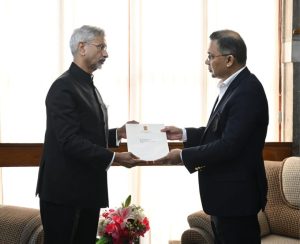Hunger in plenty: Case study of India, China gap in food intakes
By Pradeep Kumar Panda
Bhubaneswar, April 10: While population in India has bene growing at the rate of about 1.84 per cent, the productions of foodgrains have been climbing at the rate of three per cent. Yet, the incidents of malnutrition in India are in sharp contrast with China. During early 1980s, per capita supply of eggs and meat products in India was close to China.
Withdrawal from agriculture by cultivators has sharply decelerated after 2011-12, while shift of agriculture labour from the sector has accelerated. This necessitates support for mechanization on smallholder farms. The concerns about threat to agriculture due to youth not staying in agriculture is belied by NSO periodic labour-force survey 2017-18.
An important reason for slow shift of farm youths to non-agriculture sector is their strong preference for middle income jobs but in many cases they do not have required skill and capability for such jobs. Medium, small and micro (MSME) enterprises, which are labour intensive, seem to be an appropriate alternative for rural employment generation. Linking agri-food processing to production through efficient value chain, contract farming and direct linkage between factory and farm offers considerable scope for rural employment generation as well as raising farmers’ income.
In the wake of capital intensive production preferred by manufacturing sector and anticipated threats to jobs posed by emerging technological innovations there is a need for a rethink on pursuing traditional development strategy of shifting workforce from agriculture to manufacturing and services.
India should explore possibilities of creating blue collar jobs in and around agriculture. This also looks desirable as withdrawal of labour from agriculture has already started affecting some farm activities and farmers’ income adversely and there is serious shortage of skilled workers in agriculture needed for specialized operations and adoption of modern technology.
The reasons for workers preferring to move from agriculture to non-agriculture are low wages in agriculture, stress of manual work and irregular employment. These three problems can be addressed by innovative approaches in production and post-harvest activities. These can be harnessed by developing and promoting new farm models based on knowledge and skill based agriculture and post-harvest value addition at farm itself.
Skill development can play a major role in this by promoting and imparting skills required in modern agriculture, value addition and primary processing. India’s nutrition indicators and child health indicators are low. According to FAO largest number of people who are hungry or undernourished live in India.
IFPRI in its annual publication “Global Hunger Index” shows India in a very poor light year after year. All this despite the fact that India has become largest rice exporting country with about 10 per cent of its rice production sold in overseas market.
Since 1970-71, food production in the country has increased at trend rate close to three per cent while population growth in the same period was 1.86 per cent. Further, growth rate in food production has remained intact in the recent years whereas population growth rate has decelerated over time.
Clearly, per capita production of total (all) food has witnessed exponential growth. India is also having excess stock of rice and wheat for many years in a row. Recently, huge surplus of sugar has also accumulated. According to some observers India represents paradoxical situation of “hunger in the midst of plenty”.
Indian diets are undergoing diversification in a significant manner. Per capita absorption of cereals has witnessed smallest increase despite increase in availability and heavy subsidy on cereals. This is consistent with dietary diversification seen in other countries with the increase in per capita income. There is manifold increase in per capita net availability of vegetables, and doubling of fruits and milk for domestic food use.
Per capita availability of edible oils increased by 60 per cent in three decades since early 1980s. Similar changes are seen in the food balance sheet of China. However, there is a big difference in the growth and level of per capita supply of horticultural and livestock products between the two countries.
During early 1980s per capita supply of eggs and meat products in India was close to China. In the next three decades supply of these items turned five times that of India. Alongwith much higher level of eggs and meat products, Chinese use three times the vegetables and 80 per cent more fruits than Indians.
The data on food supply shows that though there is large shift towards horticultural and livestock products use in India the increase is much smaller compared to the countries like China who have improved nutrition and child and maternity health considerably.
Low intake of total food is the main reason for widespread hunger and malnutrition. The country would need to relook at policy interventions in agriculture which are heavily biased towards rice, wheat and sugar which are produced in excess of domestic and export demand. Some study shows that even among economically well to do households, incidence of undernutrition and underweight children is quite common.
Addressing all these concerns requires close coordination between strategy for food production and health. Further, nutrition awareness is very important to improve nutrition and health, as, major cause for poor nutrition is rising preference towards spicy food, oily food and sugary food rather than nutritive food.






